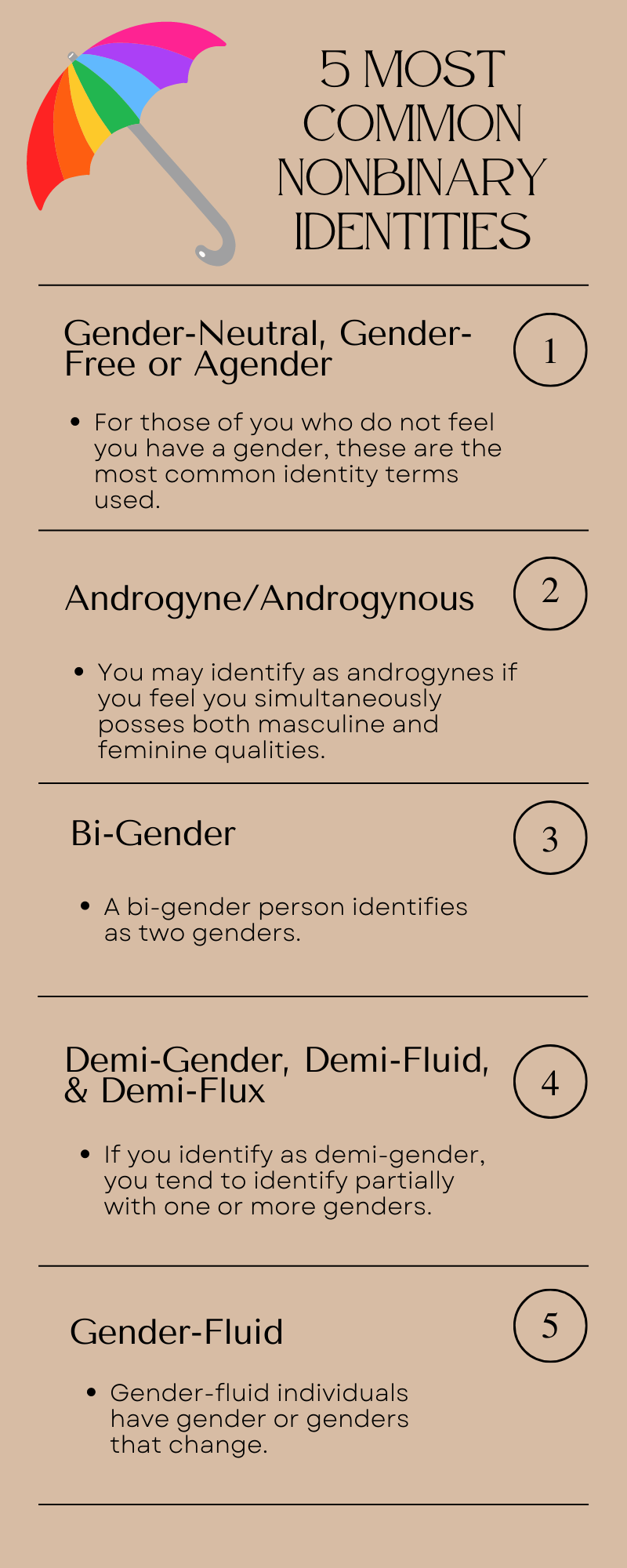Non-Binary vs. Gender Fluid: What’s the Difference?
With gender language constantly changing, it can be challenging to pinpoint which gender identity feels right to you.
The biggest challenge is how specific terms are being used interchangeably to refer to a more or less similar gender identity.
Enter nonbinary and gender fluid. Each word defining a scope of gender identity is often misunderstood and confused by many.
It doesn’t help that nonbinary is often seen as an umbrella term, with various gender identities such as androgynous, agender, genderfluid, genderqueer, and others underneath it.
This causes the main confusion as people who identify more closely as genderfluid yet see it as a part of the nonbinary identity, leading to cognitive dissonance: “Which is it?”
To help you clarify, let’s first take a look at the nonbinary identity.
Nonbinary, while an umbrella term, is often described in three ways:
Individuals who feel comfortable between masculine and feminine but not exclusively one or another.
Feeling closer to one gender than another but not entirely male or female.
Being outside of the binary system altogether.
Note the key element here is not exclusively male or female, masculine or feminine.
The nonexclusive way of being is a cornerstone of the nonbinary identity.
Whereas the key element of the genderfluid identity is the fluidity between the masculine and feminine, male and female.
Due to its natural fluidity, genderfluid people can sometimes feel exclusively masculine or feminine, whereas nonbinary people do not.
Think of genderfluid identity as not fixed, able to shift across the gender spectrum (not just male or female) depending on the time of the day, day of the week, week of the month, or the month of the year.
Both genderfluid and nonbinary-identified people vary in their gender expression and presentation. Some of the variations of expressions are:
gender non conforming
gender conforming
feminine
masculine
androgynous
fluid
If you struggle to determine if your gender identity is nonbinary or genderfluid, some of the questions you can ask yourself to help you figure out are:
Do I experience my gender identity as exclusively male or female?
If not, do I experience my gender identity somewhere between male and female but not one or the other?
Do I find my gender fluctuates daily or week to week?
If yes, does it feel like there is a natural fluidity to it?
Taking the time to dive deep into these questions will help you clarify your gender identity. And remember, gender identity for many is an ever-evolving process and may change over time.
If you identify as nonbinary and feel ready to explore transition-related options, I highly recommend reading Am I Non-Binary? Ultimate Guide to Help with Gender Identity!


